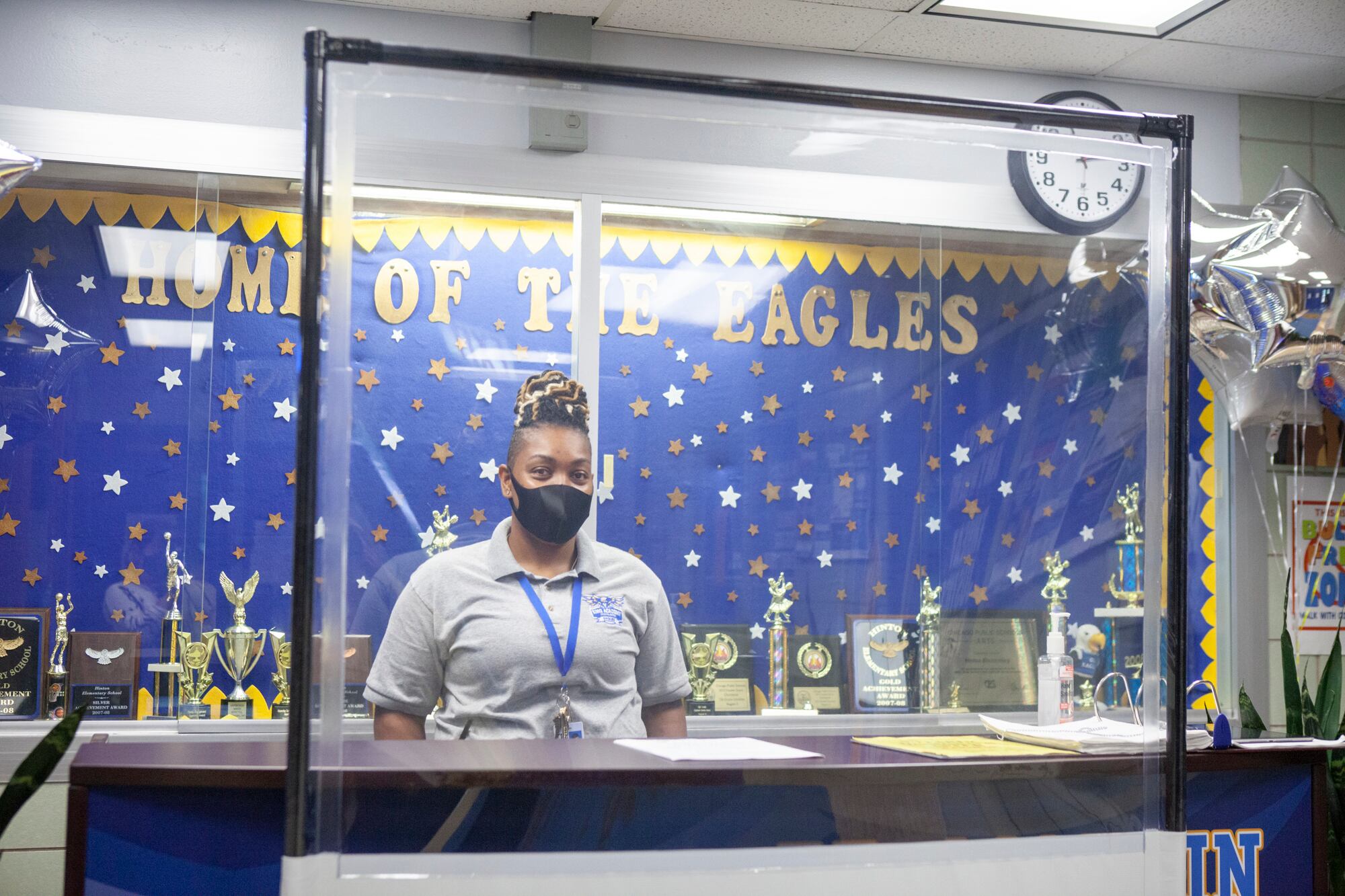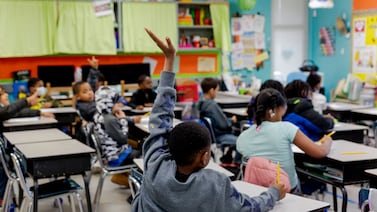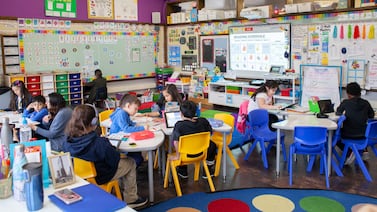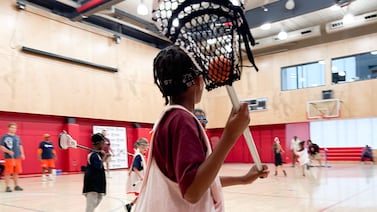The latest ruling in a labor dispute between Chicago’s teachers union and the public school district could complicate efforts to reopen school buildings later this fall.
An arbitrator for the state labor board, Jeanne Charles, sided with the union in a case about whether school clerks had to return to school buildings amid the coronavirus pandemic and said the district should err on the side of providing an opportunity for remote work.
“Although the board has made efforts to mitigate the risk, subjecting these employees to increased risk of COVID-19 infection for work that can be performed remotely does not fulfill CPS’s contractual promise that its employees work in ‘safe and healthful conditions,’” Charles wrote.
The school district said the decision, issued late last week by a state labor board judge, sets an impossible bar. District officials said they will dispute the finding.
The ruling comes in response to an unfair labor practice lawsuit filed by the union this summer. The union argued school clerks shouldn’t be required to work in-person if another option is possible, and that bringing in employees violated the contractual promise for a safe working environment.
In response, school officials called the ruling “deeply flawed,” and promised to contest the decision. “The arbitrator’s deeply flawed ruling substitutes actual public health standards for her own judgments and doesn’t find any actual deficiencies in the district’s plan or a single building where conditions are unsafe,” said spokesman Michael Passman.
How this dispute is resolved could have implications for whether the country’s third-largest school district brings students back into school buildings on Nov. 9. The school year started virtually for all students in district-run schools, and so far, Chicago has offered little information on when or how it would decide to resume in-person schooling, even as a decision date looms.
Like many districts vacillating between whether to provide in-person or remote schooling amid the coronavirus pandemic, Chicago must weigh concerns about COVID-19 contagion from in-person learning with increasingly vocal complaints about student struggles with remote learning.
Most New York City schools haven’t even been open a full week, and already the mayor plans to close 100 schools in virus hot spots. In Chicago, the death of a first grade teacher in Chicago Public Schools last week, and reports that a person who attended in-person SAT testing at Lane Tech High School last month tested positive, have also put the spotlight on the risks of reopening buildings.
But district leaders have acknowledged that remote learning has limitations, particularly for the district’s most vulnerable children. Families of special education students, for example, have said their children are not receiving services, and some interventions are difficult to provide remotely.
The arbitrator’s ruling found that reporting to work increased the danger of contracting COVID-19, and remote work was the only way to fully eliminate the risk. Therefore, the district should err on the side of providing an opportunity for remote work.
The arbitrator gave the union and district two days to agree on which of the clerks’ duties can be performed remotely and those that need to be handled in person. Without an agreement, the arbitrator would impose a resolution.
School district officials have said that some tasks, such as student registration, must be done in-person. The union has argued those tasks could be done remotely if necessary.
At a Monday morning press conference, union officials said that 1,000 clerks, tech coordinators, and other staff who worked remotely in the spring were asked to return to buildings this fall to register students and take on other duties; many of them did not receives sufficient protective equipment, the union said.
“These schools are deplorable,” said school clerk Sabrina Woods. “They have no PPE.”
The district insisted again that employees reporting to buildings are provided with safe working conditions, with measures including face coverings, temperature checks, and sneeze guards.
The union also raised concerns about aging ventilation systems in schools, an issue that has taken center stage nationally. The district vowed to complete air quality checks before it considers reopening schools and said it was installing new air filters at every school.
The city said this summer that it would pursue a hybrid learning plan as long as the number of new daily cases stayed below 400 a day without other concerning factors, such as an increase in hospitalizations, and said an overall positivity rate below 5% was a positive indicator for a possible return to school. It has not said what metrics it would use to make a determination for a second quarter return to school buildings.
But the union has argued that the city’s overall positivity rate of 4.3% does not reflect higher case counts in some Black and Latino communities, where many school support staff and clerks live and work.
While the union threatened a strike ahead of initial fall plans to reopen schools, and has been critical of recent plans to bring special education students in for select services, leaders stressed that they weren’t wholesale against the reopening of schools, but needed to see a more concrete safety plan from the district.
“The people who do the frontline work have to be part of the discussion and decision of how to make schools run safely,” union president Jesse Sharkey said Monday morning. “This continues to be a public health emergency.






